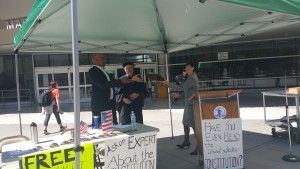Tuesday, November 8, 2016 was Election Day in the United States of America. The results of the presidential election raised lots of concern about the country’s future. I sent the following email to faculty and staff in San José State U’s College of Social Sciences.
Dear Social Sciences Family-
Many of us are shocked and saddened by yesterday’s election and our nation’s deep divisions. It seems that across all aspects of the political spectrum many actions were driven by ignorance and fear instead of knowledge and hope. As we process these results two social media posts by colleagues may be good to keep in mind:
“Out of touch. Like me, you are out of touch with the majority of our country if you did not vote for Trump. (I am not a Hillary supporter either….so I am even more out of touch than most.) Whether or not you are right, does not change that we are out of touch. That said, the best route forward is not to vilify those who don’t think like us, nor condemn them as stupid or ignorant, but instead to understand how and why the majority came to be so different from us.”
“Being a teacher/writer/advocate has never been more important.
Let’s fight for the next generation.
I’m fired up and ready to go.”
In these challenging times let’s remind ourselves of our mission to help our students and the broader community create more complex and nuanced understandings of their social worlds. Our work matters more than ever now.
Warmest Regards,
Walt

